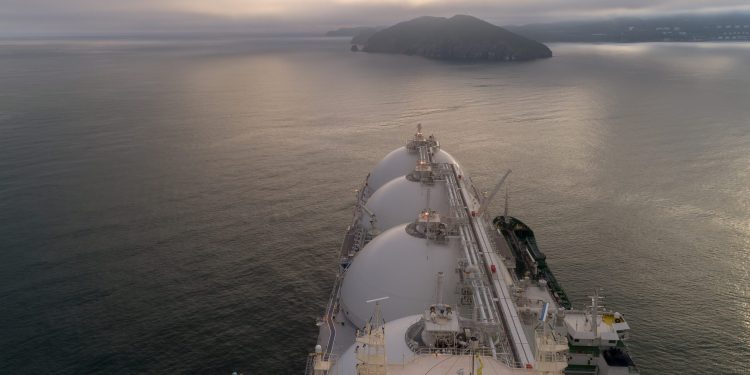In February, Europe’s imports of liquefied natural gas (LNG) are expected to climb to their second-highest level ever, while Asia’s are predicted to fall to their lowest point in almost two years, according to a Reuters report.
Spot cargoes are currently priced at least 50% higher than they were a year ago, and buyers in Asia are avoiding these high costs.
Demand has been dampened by a milder-than-usual winter across much of North Asia, allowing European buyers to bid for cargoes to restock the continent’s depleted inventories.
LNG imports
The continent with the highest LNG imports, Asia, is expected to receive 20.7 million metric tons of the super-chilled fuel in February, as per data collected by commodity analysts Kpler.
Kpler reports that the February 2024 total is the lowest monthly total since April 2023. This is a decrease from January’s 24.59 million and 22.67 million in February of the previous year.
Europe’s February LNG imports are projected to be 11.81 million tons, which is similar to January’s imports of 11.84 million tons.
While February and April 2023 hold the second and third-highest import records, respectively, February’s daily import rate surpasses April’s, making it the highest on record.
The discontinuation of Russian pipeline gas supplies, both following the February 2022 invasion of Ukraine and the complete halt of pipeline gas via Ukraine in January, has led to Europe increasingly relying on LNG for its energy needs.
The US surpassed Australia in 2023 as the world’s largest exporter of LNG and is now fulfilling a significant portion of Europe’s increased LNG demand.
US imports to Europe are projected to decrease to 6.53 million tons in February, compared to January’s record high of 6.84 million tons.
Although daily imports in February are at an all-time high, nearly three times the 2.30 million tons Europe purchased from the US in July of last year.
Dependence on US LNG
The dependence of European buyers on US LNG is growing.
This could bolster the continent’s position with the new US President Donald Trump, who is increasing tariffs on trading partners to encourage them to purchase more American goods.
Europe’s LNG demand is also helping drive the spot price for the fuel to levels close to the European benchmark TTF , which ended at 46.06 euros per megawatt hour on February 21, equivalent to $14.12 per million British thermal units (mmBtu).
Spot Asian LNG closed at $14.00 per mmBtu in the week ending February 21; this was down from the 14-month high of $16.10 the previous week and only slightly lower than the current price of $14.30 per mmBtu.
Spot cargo prices in Asia declined as peak winter demand subsided and high prices since November dampened demand.
Kpler data shows that February arrivals are projected to be 4.99 million tons. This is a decrease from 6.05 million tons in January and 5.82 million tons in February of the previous year.
The Chinese utilities are finding it difficult to make a profit selling as the Asian spot price has remained around $14 per mmBtu since mid-November.
Japan, the world’s second-largest LNG importer, expects to see the impact of a mild winter in February, with LNG arrivals anticipated to be 5.79 million tons. This is a decrease from the 6.74 million tons in January and lower than the 6.07 million tons from February 2024.
The high prices and the end of winter demand could lead to a larger-than-usual seasonal dip in North Asia’s LNG demand.
Elevated LNG demand in Europe, as the continent replenishes its gas storages, will likely keep spot prices high enough to discourage Asian buyers.
The post Why are Europe’s LNG imports surging while Asia’s are slipping? appeared first on Invezz










